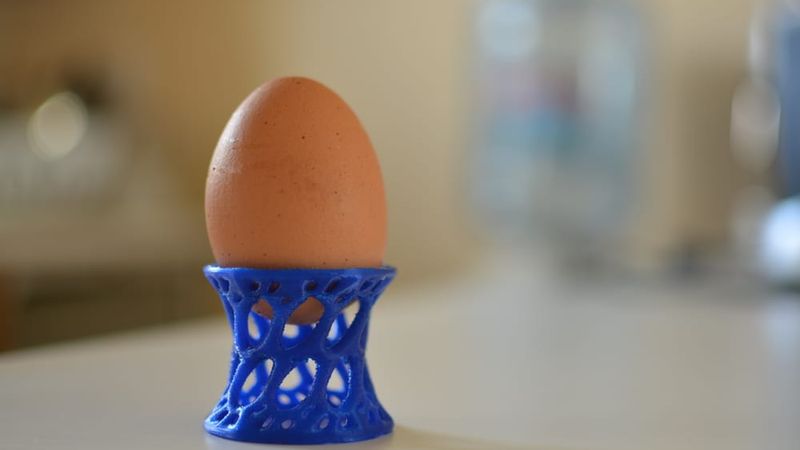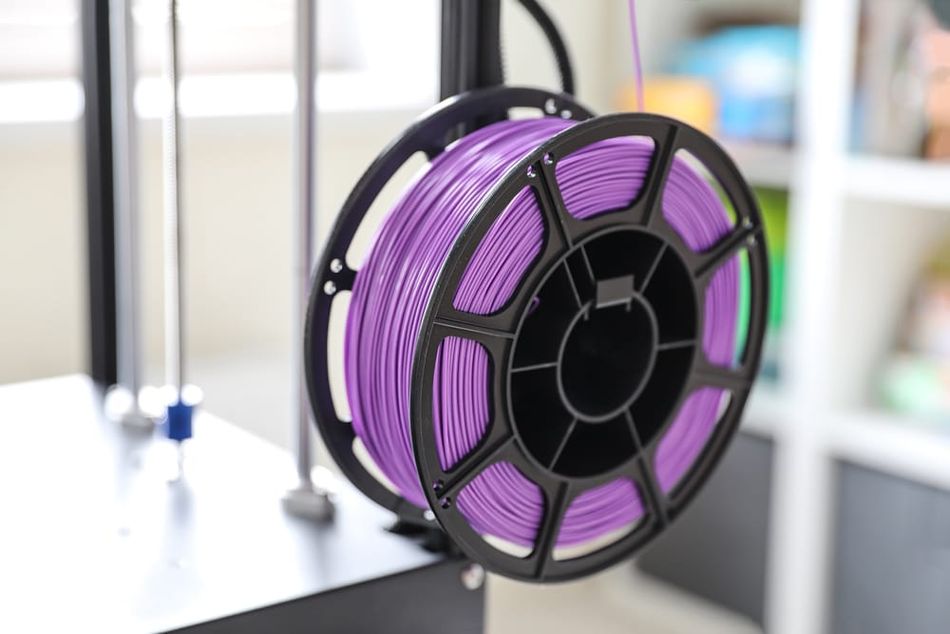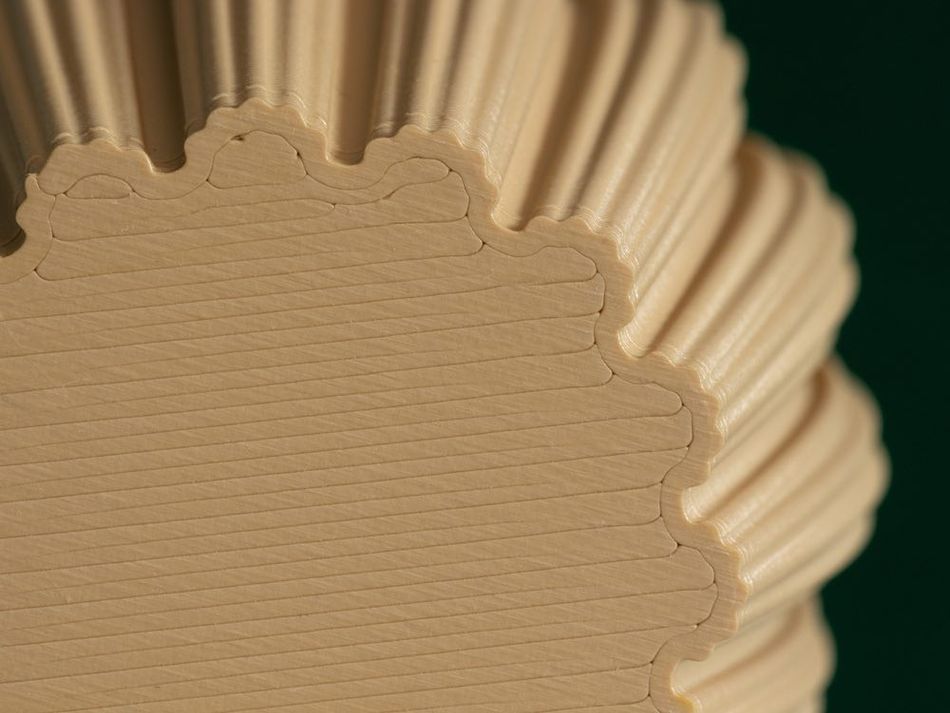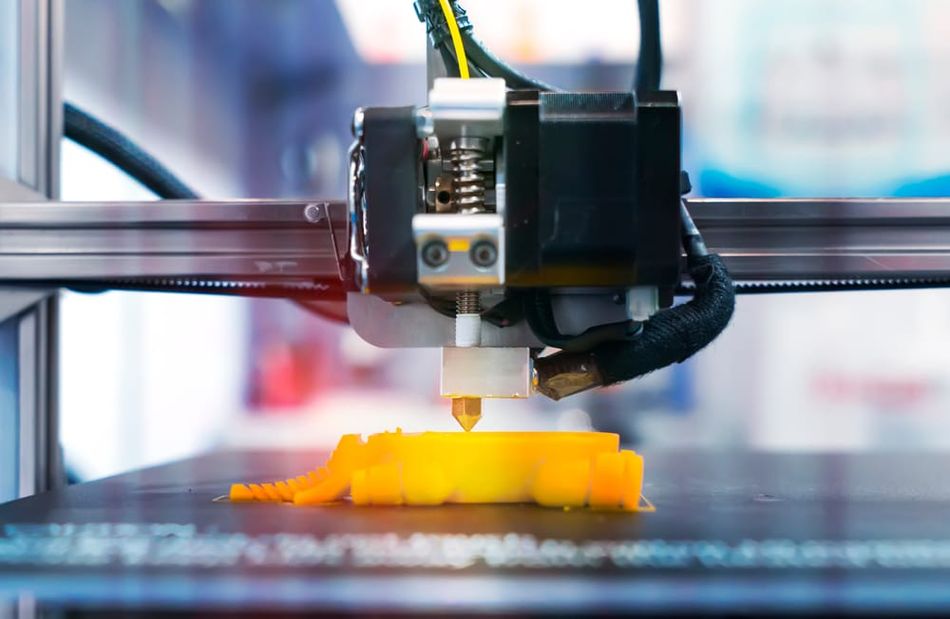Food-grade 3D printing: Is PLA Food-Safe?
Here's what you need to know in order to 3D print safe food containers, utensils, and kitchenware using PLA filament.

When it comes to 3D printing, certain factors influence how food-safe PLA is
3D printing technologies give us the ability to design and bring any number of objects into existence, from missing hardware parts, to toys and models, to household items. But while the design freedom and capabilities of 3D printing may make it seem like you can make just about anything from the comfort of your home, it is important to understand what materials you are working with, especially if you are printing objects for your kitchen or parts that will come into contact with food.
PLA (polylactic acid) is a bioplastic material and is one of the most common 3D printing filaments available today. The plastic is derived from plants—like corn, maize, or sugarcane—and is popular for its low cost and easy processing. Some of PLA filament’s benefits include that it prints at a lower temperature than many 3D printing materials, such as ABS, and it does not require a heated print bed. Because the material is made from natural materials, like corn starch and sugarcane, it is biodegradable and many assume it is also food-safe. This can be true, but not in all cases. In this article, we answer the question “is PLA food-safe?” by looking at what influences the material’s food safety, when to avoid food contact, and how to ensure your 3D prints are safe to use.
Recommended reading: PLA bed temperature & print temperature settings
What are the food-safe risks of PLA?
As a thermoplastic material, PLA is generally safe for food contact. In fact, a study from 1995 that put PLA material through several tests to determine how it breaks down found that it was “Generally Recognized As Safe (GRAS)” for food contact.[1] More specifically, the researchers conducted migration studies on several samples of (non-printed) PLA to understand which chemical compounds were released from the material when in contact with food. The results showed that the main migrants were lactic acid based, which itself is food-safe.
The study states: “Potential migrants from PLA include lactic acid, lactide (the monomer), and lactoyllactic acid (the linear dimer of lactic acid). The studies were designed to model reasonable ‘worst’ case extraction situations when the polymer is used (a) in houseware articles for short and intermediate time periods at various temperatures and (b) in food-packaging materials. The limited migration observed during the trials represents no significant risk since migrating species are expected to convert to lactic acid, a safe food substance.”
When it comes to 3D printing, however, there are many other factors that can affect whether PLA material is actually safe to use in contact with food, such as additives and dyes in the PLA filament, the type of printhead being used, porous structures and more.
Food-safe risk #1: PLA additives
In its purest form, PLA is food safe. However, if you are 3D printing with colored PLA filament, you should know that the additives used to dye the material may not be food safe. If you are 3D printing an object that will come into contact with food, like a mold or cookie cutter, it is safest to use natural (undyed) PLA filament. You can also consult the material information and safety data sheet for a particular filament brand to determine whether it contains any non-food-grade additives.
Recommended reading: Is PLA Biodegradable? What To Do With Scrap Filament
Food-safe risk #2: Non-food-safe printheads
Another element that can affect PLA’s food safety is the 3D printing process itself. In many cases, the metal hotend of the 3D printer is made from a non-food-grade material. That metal is also continually coming into contact with the filament as it is extruded, which can lead to potentially dangerous contaminating traces in your 3D printed part. Brass nozzles, for instance, can contain lead and potentially leach toxic particles into 3D prints. If you are concerned about whether your hotend will affect the safety of your 3D print, you can always opt to use a stainless steel nozzle, which is considered food-safe.

Food-safe risk #3: Bacteria contamination
Something else to be aware of is the fact that bacteria and germs can get stuck in and grow in 3D printed parts. While they may look solid, FDM 3D printed parts have tiny pores in them that can trap moisture and provide a breeding ground for bacteria. If you do use a fresh 3D printed part to serve a snack or beverage, the pores can trap tiny particles of food, which can lead to potentially harmful bacteria growth. In terms of cleaning, it is difficult if not impossible to ensure that a PLA part has been properly sanitized for food contact once it has already come into contact with food. (The material is not very resistant to high temperatures and cannot be boiled or put in the dishwasher). This means it is safer to use a PLA utensil or plate once and then dispose of it.
Food-safe risk #4: Filament contamination
Finally, it is worth mentioning that your 3D printer should be thoroughly cleaned if you are printing objects for use with food. If you have previously 3D printed non-food-safe filaments such as ABS, there may be traces of the material in the 3D printer that can contaminate a PLA print and make it hazardous. This includes the print bed as well as internal 3D printer components, like extruders and hotends. Ideally, you would use a dedicated 3D printer to print food-safe PLA parts.
Recommended reading: PLA Recycling: Can PLA 3D Printer Filament be Recycled?

Making PLA 3D Prints Safe for Food Contact
When 3D printing items that need to be food-safe, it is always a good idea to err on the side of caution. One way to ensure that your PLA print is safe to use as kitchenware is to apply a food-safe coating or sealant. When it comes to coatings, there are a couple good options at your disposal. Let’s take a look.
Epoxy resins
Epoxy resins are a common coating for 3D prints that will seal the surface. However, it is important that you find an epoxy resin that has been FDA certified as food-safe. You should also note that in liquid form epoxy resins contain toxic materials and must be handled with care (i.e. with gloves and mask). They are only safe when properly cured and hardened.
For example, in tests comparing non-coated PLA 3D prints and epoxy-coated prints, the epoxy-coated prints performed far better, showcasing no bacterial growth after 14 days of regular usage (i.e. food contact and washing), while the untreated PLA model did have significant bacterial growth.[4]
Silicone coating and casting
Another option is to use silicone as a food-safe coating. Silicone will seal the pores in the 3D print and result in a watertight surface finish. It is also less hazardous to use than epoxy resins. If you are aiming to make food-safe products that can be used safely over prolonged use, it is also possible to 3D print a mold and cast it with food-grade silicone. There are also many examples of people 3D printing masters to make food-safe silicone molds. This is a great option if you want to make custom ice cubes, candies, or chocolates.[3]

One disclaimer: a food-safe coating might wear down and degrade over time, so you should be wary of using your 3D printed kitchenware or food containers over the long-term. You should also read the fine print on the coating you are using: some are dishwasher safe and others are not and some are not suitable for use with hot foods or liquids.[2]
Recommended reading: PLA vs ABS: Which filament should one use?
Conclusion
Ultimately, as a pure material PLA is generally considered food-safe, as there are no toxic chemicals in the polymer itself. That being said, dyes or additives found in spools of PLA filament may not be food-safe. Other factors, like the 3D printer hotend material can also influence if a printed PLA part is safe to be used with food. Porosity in 3D printed objects can also lead to bacterial growth that can contaminate food.
It is therefore generally safest to apply a food-safe coating to 3D printed kitchenware to avoid any potential health hazards or to use PLA prints as single use items. Other filaments, such as PETG, may also be considered safe for printing food containers. Ceramics are another category of food-safe material if treated properly.
Frequently Asked Questions (FAQs)
Q: Is PLA food-safe?
A: PLA is generally considered food-safe in its pure form. However, factors such as additives, the 3D printing process, and bacteria growth need to be considered before using PLA 3D prints for food-contact applications.
Q: Does the color of PLA affect food safety?
A: Yes, colored PLA filaments may contain dyes or additives that are not food-safe. For food-related objects, it's generally recommended to use undyed PLA to avoid potential risks. And always check the material's safety data sheet for specific information on types of dye or food safety.
Q: Are all 3D printer nozzles safe for food?
A: Not all 3D printer nozzles are food-safe. Some hotends, like brass nozzles, may contain trace amounts of lead, which can leach into PLA prints. Using stainless steel nozzles is a safer option for food-related prints, as the material is considered food-safe. Additionally, if you have used a hotend with a non-food-safe material like ABS, contamination is also a risk.
Q: Can bacteria grow on PLA prints?
A: Yes, PLA 3D prints often have a porous surface that can trap moisture, creating a breeding ground for bacteria. Moreover, due to PLA’s low temperature resistance, it is difficult to fully clean PLA prints for repeated food contact.
Q: How can I ensure my PLA print is safe for food?
A: One way to make PLA prints safer for food use is to apply a food-safe coating, such as epoxy resin or food-grade silicone. These coatings seal the surface and reduce the risk of contamination.
Q: Are food-safe coatings durable for long-term use?
A: Food-safe coatings, like food-grade epoxy or silicone, can wear down over time, particularly with frequent use, washing, or exposure to high temperatures. Be mindful of the longevity and limitations of these coatings when using them on food-related items.
Q: Can I 3D print molds for food use?
A: Yes, 3D printing can be used to create molds for food items. For example, you can 3D print a mold and then cast it with food-grade silicone to make custom items like chocolates, ice cubes, or candies. You can also 3D print a master model to create food-safe silicone molds. This is a great option for creating food-safe products without direct food contact with PLA.
References
[1] Conn RE, Kolstad JJ, Borzelleca JF, Dixler DS, Filer Jr LJ, LaDu Jr BN, Pariza MW. Safety assessment of polylactide (PLA) for use as a food-contact polymer. Food and Chemical Toxicology. 1995 Apr 1;33(4):273-83. https://www.sciencedirect.com/science/article/abs/pii/027869159400145E
[2] The Essential Guide to Food Safe 3D Printing: Regulations, Technologies, Materials, and More [Internet]. Formlabs, 2024. Available from: https://formlabs.com/blog/guide-to-food-safe-3d-printing/
[3] Engineering After Hours. 3D Printed Molds with Silicone Rubber from Smooth On [Internet]. Youtube, June 24, 2020. Available from: https://www.youtube.com/watch?v=LBnUZ-AEuWw
[4] Kočí, Jakub. How to make food-grade 3D printed models [Internet]. Prusa Research, December 4, 2020. Available from: https://blog.prusa3d.com/how-to-make-food-grade-3d-printed-models_40666/
Table of Contents
What are the food-safe risks of PLA?Food-safe risk #1: PLA additivesFood-safe risk #2: Non-food-safe printheadsFood-safe risk #3: Bacteria contaminationFood-safe risk #4: Filament contaminationMaking PLA 3D Prints Safe for Food Contact Epoxy resinsSilicone coating and castingConclusionFrequently Asked Questions (FAQs)References